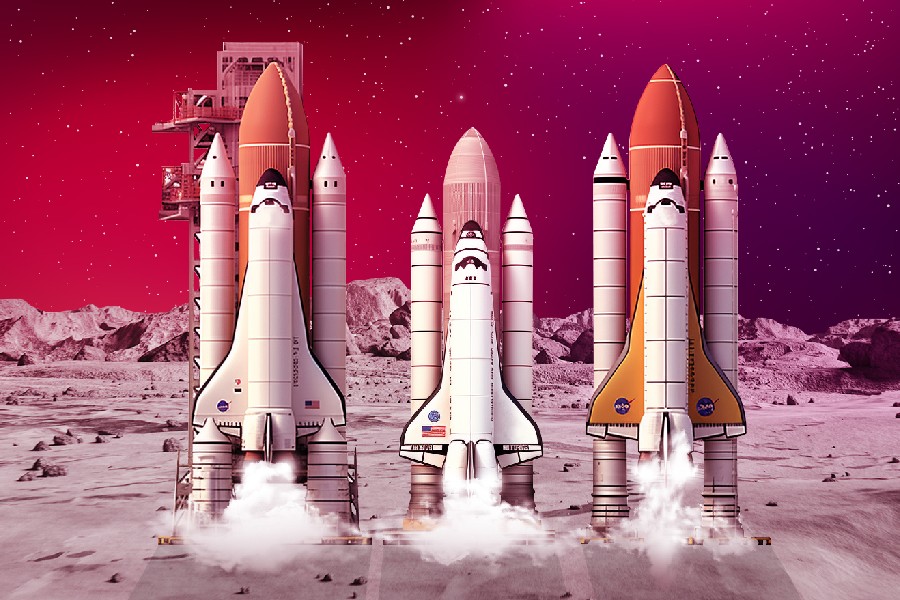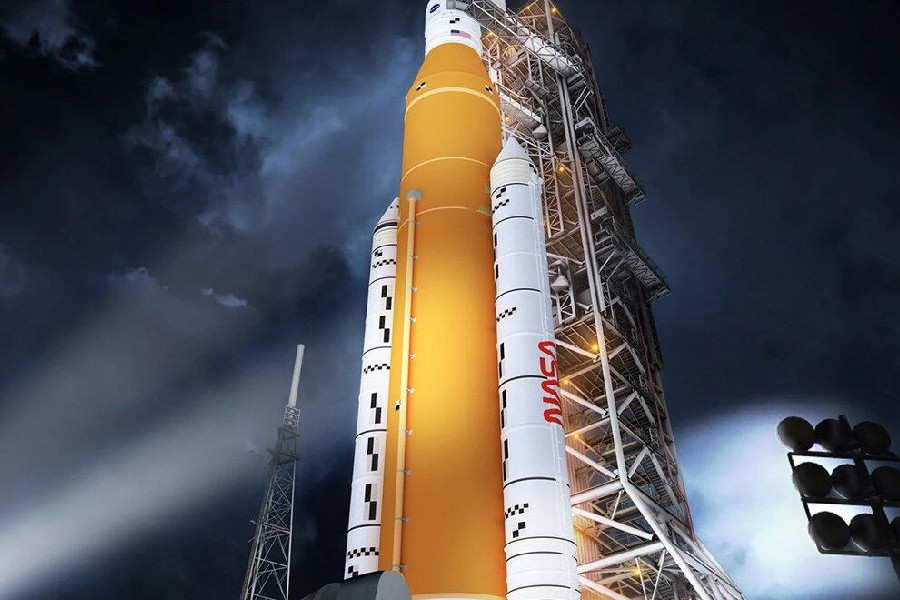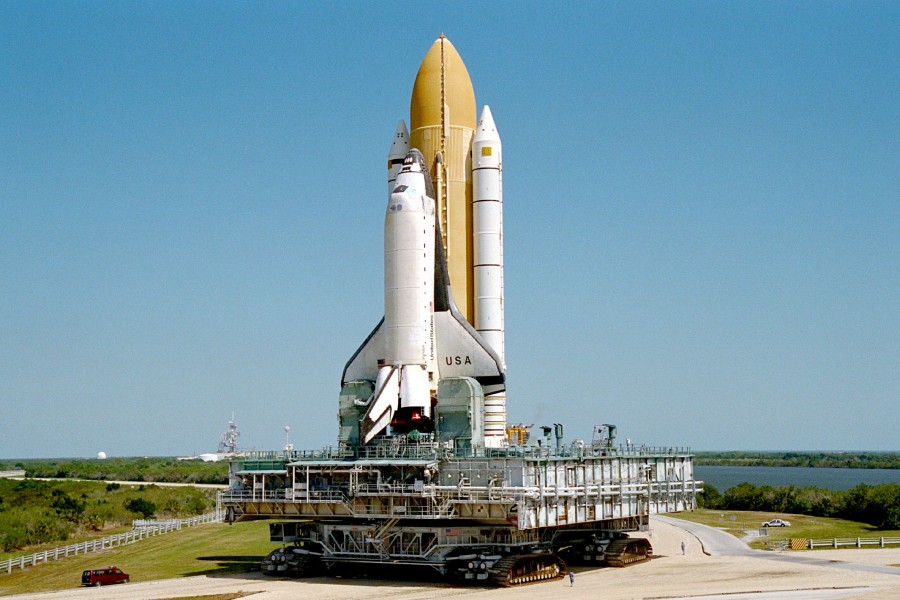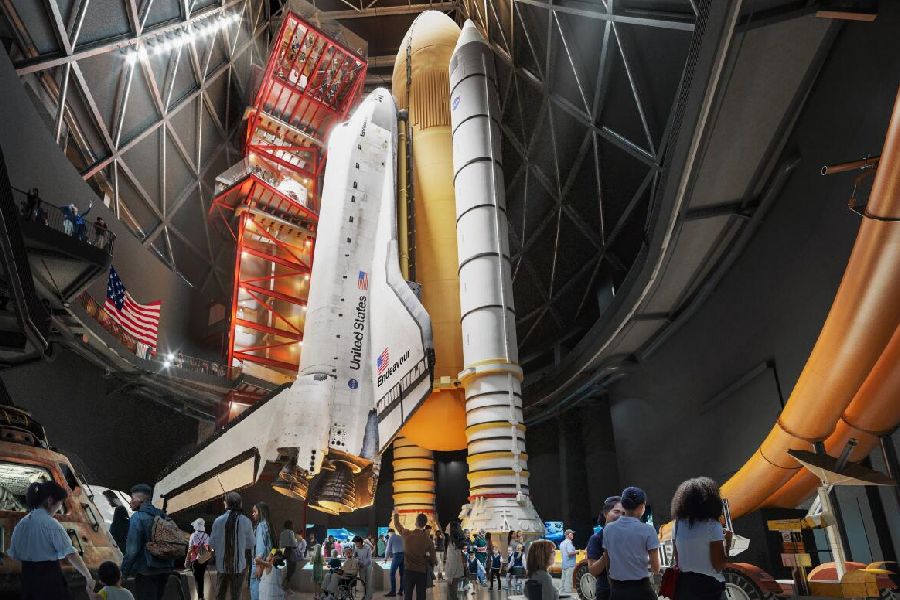The names and stories behind NASA’s space shuttles provoke feelings of awe, wonder, and discovery. These iconic vehicles carried both astronauts and imagination.
Embark on a celestial linguistic journey with us as we unravel the fascinating world of Space Shuttle Names. The space shuttle names include iconic monikers that resonate with historical significance.
This article will delve into the thought processes behind these carefully chosen designations for the shuttle program. We will explore why these specific names were selected and what meaning they hold.
We’ll also learn about the symbolism and tributes woven into these titles for the orbiters. These orbiters made spaceflight history by connecting Earth to the destinations of the International Space Station and Hubble Space Telescope.
What do these names reveal about the missions’ objectives, the spirit of exploration, and the people behind the scenes? The answers lie within the orbits of discovery and innovation.
Space Shuttle Names
Among the iconic Space Shuttle names, Columbia pays homage to historical exploration, drawing a connection to the American exploration ship. Challenger embodies the spirit of scientific discovery inspired by the HMS Challenger’s expeditions.
Discovery signifies the vessel’s role in advancing scientific knowledge, echoing a theme of continual exploration and understanding. Each name carries a unique significance, contributing to the rich tapestry of human space exploration. We are to talk about which space shuttle flew the most missions and how many space shuttles were there.

What is a Space Shuttle?
Before we go on to explain the names of the most famous space shuttles, we need to clarify what a space shuttle is.
A space shuttle, or shuttle orbiter, is a reusable spacecraft designed to routinely transport crews and cargo between Earth and orbit. Unlike expendable rockets, space shuttles were partially reusable vehicles capable of launching to space multiple times.
The goals of space shuttles included conducting scientific experiments in microgravity, deploying satellites, and supporting the construction of the International Space Station (ISS) through ferry trips and hauling station components.
NASA operated a fleet of five space shuttle orbiters between 1981 and 2011 for over 30 years of spaceflight. The winged vehicles launched vertically but landed aircraft-style horizontally.
Key shuttle accomplishments included:
- Transporting over 350 astronauts into space
- Providing over 1,000 days of orbital operations
- Enabling ISS construction through component delivery
- Deploying satellites like the Hubble Space Telescope
As the first reusable space vehicle fleet, the iconic shuttles paved the way for economic access to low Earth orbits over their three decade tenure.
Names of Space Shuttles
NASA’s space shuttle program featured five operational orbiters, each with meticulously chosen names inspired by iconic ships of exploration.
Enterprise
The original space shuttle test vehicle, Enterprise, paid homage to the fictional Star Trek starship.
Named after the iconic vessel that boldly ventured into the final frontier, the shuttle Enterprise performed crucial approach and landing tests, paving the way for subsequent orbital missions.
Although it never entered space, Enterprise played a pivotal role in shaping the future of human spaceflight by testing the shuttle’s aerodynamic capabilities.
Columbia
Columbia, the first space shuttle to reach orbit, drew its name from the historical moniker used for the American continent and the female personification of the United States.
As STS-1 launched in 1981, Columbia embarked on pioneering early test flights, echoing its namesake’s exploration of new frontiers for the nation.
The orbiter played a vital role in shaping NASA’s shuttle program and, tragically, met its end with the STS-107 disaster in 2003.
Challenger
Named after the British naval research vessel HMS Challenger, which conducted scientific expeditions during the 1870s, the shuttle Challenger symbolized a push into space research. Notably, it carried out the first spacewalk during STS-41B.
Tragically, Challenger became eternally linked to space exploration history with the catastrophic loss of its STS-51L crew in 1986. Despite the tragedy, the orbiter’s legacy underscores the risks and resilience inherent in human space exploration.
Discovery
Discovery got its name from a series of exploration vessels, including the HMS Discovery, known for scientific research expeditions to Antarctica. It also referenced Henry Hudson’s ship Discovery, which journeyed to North America and Canada in the 1600s.
With missions transporting vital segments to the International Space Station (ISS) and servicing the Hubble Space Telescope, Discovery lived up to its namesake, enhancing human discovery in the vastness of space. It’s worth noting that Discovery is the space shuttle with the most flight. The space shuttle had flown 149 million miles, to be more exact.
Endeavour
Endeavour’s name emerged from a national competition, reflecting perseverance and ambition to explore. Some of its most notable missions involved satellite rescues and launching the ambitious Galileo planetary probe destined for Jupiter.
Endeavour represented the spirit of pushing boundaries and undertaking complex missions, aligning with its title and contributing significantly to the space shuttle program’s achievements.
Atlantis
Atlantis, named after the mythical island city, became one of the longest-serving shuttles. True to its imaginative namesake, Atlantis played a crucial role in constructing humanity’s orbital outpost, the International Space Station (ISS).
Hauling materials and supplies needed for ISS construction, Atlantis showcased the practical aspects of space exploration and contributed significantly to the establishment of a human presence in space.

Naming Conventions & Themes
The names followed specific themes and drew inspiration from various aspects of exploration and imagination.
- Pioneering vessels: Discovery, Endeavour, Challenger
- Goddesses representing America: Columbia
- Mythical places symbolizing imagination and ambition: Atlantis
- Futuristic technological frontiers hinting at revolutionary vehicles: Enterprise from Star Trek
Selecting aspirational names connected NASA’s space ambitions to heroic achievements in human exploration across land, air, and sea. The orbiters, named after these illustrious ships, upheld their bold namesakes through three decades of expanding scientific and technological frontiers.
History of Space Shuttles
Genesis of the Space Shuttle program
The space shuttle program arose in the 1970s out of a desire for a reusable spacecraft that could lower costs and enable regular access to orbit after the era of disposable capsules and rockets used in the Apollo moon missions.
As NASA sought concepts for fully reusable vehicles, initial shuttle development began under project names “Space Transport System (STS)” and “Space Shuttle” in 1972. Goals included achieving aircraft-like operations for reliable, sustained spaceflights with quick turnarounds.
Over a million working hours, dozens of shuttle design concepts were explored using intricate models and wind tunnels. Engineers evaluated elaborate models like the delta-winged DC-3 and arrow-like A-3.
Eventually, the iconic double delta-winged orbiter shape emerged as the chosen design in tests meeting thermal, cross-range, and payload goals. Construction of structural test articles and prototypes was approved in 1974.
Early conceptualization
The shuttle design process evaluated over 60 different lightweight vehicle configurations in the early 1970s before selecting primary candidates. This included testing elaborate glider models with arrow, delta, and double delta-style wings.
Requirements like large 40,000 pounds to orbit payload capacity imposed constraints. Concepts had to enable satellite protection during launch and crosswind landings while shielding delicate wings from scorching re-entry plasma flows.
Extensive wind tunnel model profiles provided aerodynamic performance data. Engineers iterated repeatedly to balance novice pilot control, drag, stability, thermal protection and weight considerations before achieving the iconic space shuttle external configuration recognized today.
First Manned Shuttle Mission
The pioneering first manned mission of NASA’s space shuttle program was launched on April 12, 1981, featuring the orbiter Columbia on flight STS-1. Commanded by John Young with pilot Bob Crippen, the two-man crew ushered in a brand new era, validating the shuttle concept.
Lasting just over 54 hours, STS-1 served as an orbital test flight to wring out Columbia’s capabilities over 37 laps around Earth. Though no payloads were launched, extensive cameras and sensors recorded data on performance.
Challenges faced involved excess fuel consumption, missing thermal tiles, sluggish hydraulics and more – providing learning opportunities.
While brief, STS-1 accomplished every major test objective from launch pad liftoff to runway rollout. It thus opened the door, proving piloted rocket planes could launch to orbit routinely and return safely for rapid reuse. The mission spawned 135 more successful shuttle flights across three decades of space transportation until retirement in 2011.
Mission details
The STS-1 stack with Columbia launching with external tanks and solid boosters lifted off at 7 a.m. EST generating over 7.5 million pounds of thrust. Young and Crippen spent two days evaluating handling qualities, computers, navigation, and more through all mission phases from ascent to orbit to re-entry.
The 54-hour mission couldn’t rely fully on automatic systems yet untested in space. So the crew manually fired thrusters and adjusted parameters during complicated burns and maneuvers before gliding Columbia to a smooth touchdown at Edwards Air Force Base in California.
Despite tile loss and some early technical issues, STS-1 succeeded as a momentous first step in transporting astronauts aboard the ambitious winged vehicles. These vehicles would go on to enable thirty years of sustained space shuttle operations.

Maiden Flights and Major Missions
Following STS-1, four more orbital test flights continued wringing out Columbia’s capabilities over the years before operational shuttles kicked off many impactful missions.
The early developmental flights carried small payloads testing satellite deployments, spacesuit functions, and a Canadian robotic arm. Experiments probed orbiter environments, remote manipulator handling, and more ahead of operational certification.
Certified as operational after STS-4, shuttles commenced ambitious missions, deploying probes to other planets, launching iconic telescopes, and constructing humanity’s space station. Rendezvous tests led to satellite rescue feats and fruitful Russian partnerships during the Shuttle-Mir program era through the 1990s.
Tragedy struck, too. The 1986 Challenger disaster and Columbia’s loss in 2003 reminded us all of the innate risks of space exploration. Still, the shuttle fleet rebounded, continuing assembly of the International Space Station while captivating imaginations worldwide.
Mission highlights
Early on, shuttles charted innovations, deploying the first commercial satellites for Canada and Indonesia from the payload bay. Scientists conducted eclectic experiments probing crystal growth, astronomy, biotechnology, and more in the microgravity environment.
The STS-41G crew marked milestones for astronaut diversity and worldwide interest. Later came extraordinarily complex missions like the Jupiter Galileo probe deployment. There was also the first Hubble Space Telescope servicing flight to correct its flawed mirror.
Beginning in 1995, seven successful missions docked with Russia’s Mir space station, leading to future collaboration on the International Space Station program. This cemented strong ties between former rival space programs.
Shuttle Retirement and Beyond
Winding Down the Shuttle Program
With the construction of the International Space Station nearing an end, NASA decided to retire the aging shuttle fleet after a tenure of over 30 years, 135 missions, and numerous achievements that paved the way for future exploration capabilities.
The shuttle program’s conclusion commenced after Atlantis touched down from the final STS-135 mission in July 2011. The decision enabled redirecting funding towards next-generation spacecraft development and missions beyond Earth’s orbit.
Legacy of the iconic shuttles
As the curtain closed on shuttle operations, the iconic winged vehicles left behind an incredible legacy as the world’s first reusable spacecraft with an impressive safety and reliability track record.
The orbiters demonstrated new economies in space access thanks to advanced engines, thermal tiles, and avionics systems over their tenure.
They also provided vital access and supply deliveries, enabling the realization of an orbital scientific outpost through the collective effort of nations worldwide during the shuttle era.
Post-shuttle exploration
With shuttle retirement, attention shifted to fostering commercial access to space plus focus beyond Earth missions. Private crew and cargo ships now service the International Space Station while NASA develops the Orion capsule and Space Launch System rocket targeting lunar voyages.
Low Earth Orbit access was entrusted to companies like SpaceX and Boeing to fly private space taxis to the ISS through NASA’s Commercial Crew program. Concurrently, developing the Orion exploration craft and mighty SLS rocket aims to eventually return astronauts to the Moon and beyond over the coming years post-shuttle.
Thus, the shuttle program’s successful legacy continues to influence technological innovation for current and next-generation space infrastructure, supporting sustained operations in LEO all the while enabling future deep space exploration milestones.

Conclusion
As we conclude this exploration of the iconic Space Shuttle names and pivotal milestones across three decades of NASA’s shuttle program history, we hope that readers gain a deeper admiration for the bold vision and tireless ingenuity underlying this pioneering spaceflight endeavor.
The space shuttles achieved amazing technological feats. They also connected people across the world to new discoveries like no other space program before.
Though the last shuttle missions may have long passed into memory, their namesakes persist in reminding us to keep seeking, exploring, and pushing boundaries. Just as the ships of old did over vast oceans, may the spirit behind each NASA Space Shuttle Name continue voyaging across frontiers yet unknown.
